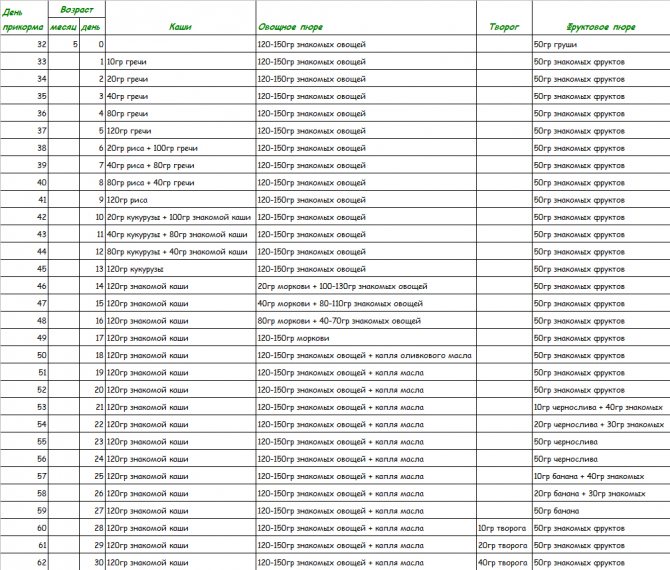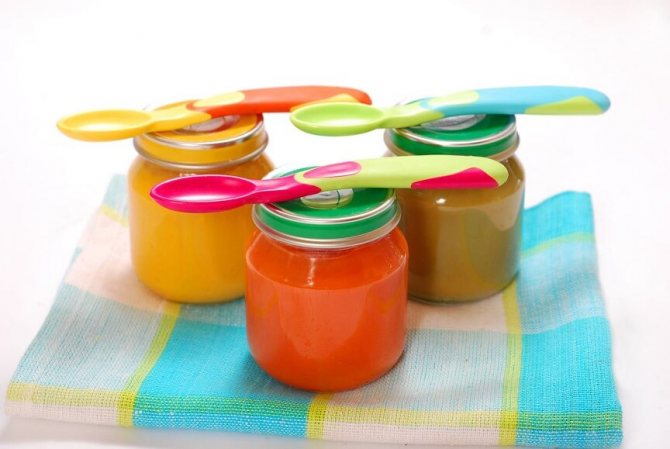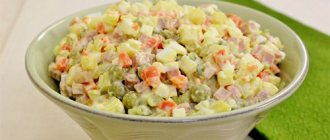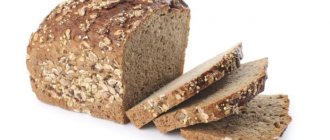Any parent understands that introducing the first complementary foods while breastfeeding is a very responsible matter. Therefore, before creating a “beautiful” menu for your child, you should familiarize yourself with the basic rules of complementary feeding.
But what should inexperienced parents do when everyone around them gives advice: friends with many children recommend one thing, grandmothers recommend something completely different, and pediatricians recommend something else. In fact, the best first feeding regimen will be the one that suits your child and will not cause negative reactions in his body. You can try the scheme that you trust most, based on reasonable arguments. And if your child’s characteristics fit well into the proposed diet, try to stick to it.
When to introduce the first complementary foods while breastfeeding
There are many opinions and arguments about at what age it is safest and most beneficial to introduce complementary foods. But first, it’s worth considering the most popular myths existing on the topic of first feeding:
- “until the baby is 6 months old, it is better not to introduce complementary foods”;
- “already at two months you can offer your child what adults eat”;
- “if a child is fed both breast milk and formula, complementary feeding should begin at four months”;
- “if the baby grows well-fed and quickly gains weight, it is better not to introduce complementary foods at all while he is feeding on breast milk”;
- “If a mother has started introducing complementary foods, then breastfeeding must be minimized.”
In fact, WHO experts consider 6 months as the optimal age for starting the first complementary feeding with breastfeeding and 4 months with artificial feeding: it is during this period that you can introduce the child to a new diet. But WHO pediatricians do not share the position of mothers who believe that only breast milk is sufficient for a child up to one year old.
The main recommendations for introducing the first complementary foods during breastfeeding are the following:
- start introducing your baby to new products from the age of 6 months;
- if you feel that the child is ready for complementary feeding earlier, you can carefully try the first new food from 5 months;
- even with the introduction of complementary foods, breastfeeding should not be stopped;
- if the baby shows reluctance to try the first new dishes, do not insist;
- Having chosen a specific scheme for introducing the first complementary foods during breastfeeding that suits your child, strictly follow it;
- Observe very carefully the child’s body’s reaction to each new product.
First complementary foods while breastfeeding: can you start before 6 months?
In the Soviet period, the introduction of the first complementary foods during breastfeeding before the child reached six months of age was treated well. However, the reasons for this were not at all related to pediatric approaches to the correct development of the baby. In the time of grandmothers, not all of them had the opportunity to breastfeed a child for up to six months: legislation required them to go to work much earlier. In addition, the adapted mixtures of those times were far from being of the best quality: they lacked vitamins and microelements, not to mention prebiotics and other modern additives. Therefore, modern pediatricians are considering options for introducing first complementary foods for babies differently.
In particular, most of them believe that the introduction of the first complementary foods during breastfeeding up to 6 months is not at all beneficial for the child. The main argument in this statement is the unpreparedness of the digestive system of a six-month-old baby in order to completely digest food products other than breast milk - while the baby’s gastrointestinal tract lacks the necessary enzymes for this. It is still difficult for a newborn to even digest breast milk - this is why he often experiences colic and bloating. And juices, cereals and purees in such a situation are even more difficult to digest. But over time (or rather, by 6 months), the digestive system improves and works more and more steadily every day, gradually preparing to accept new food. Modern pediatricians are confident that the introduction of the first complementary foods after 6 months is a kind of protection for the baby from allergies and further problems with the gastrointestinal tract.

Feeding a 10 month old baby
At 10 months, the baby is pampered with desserts in the form of sweet fruits. The most useful fruits are those that grow in close areas. Exotic fruits are put aside for later.
First of all, puree from apples, pears or prunes is given. By this age, many children acquire teeth, as a result of which they are already able to chew fruit slices. The fruits are introduced from a small volume - about 5 grams of puree or a small slice. The daily “dose” is approximately 100 grams of the product.
Some mothers will be surprised when they read that healthy fruits are given so late. There are many opinions on this matter, but experts are confident that with natural feeding there are enough vitamins in breast milk, and for artificial babies they make formulas enriched with vitamin complexes.
Thus, fruits are not such a significant source of vitamin complexes; the most important elements for a baby are protein and fat ingredients. In addition, sweet apples contain a variety of fruit acids that irritate the mucous membranes of the mouth.
Another introduced product is fish. There should not be a lot of it, and it must be low-fat and low-allergenic - for example, hake, cod or pollock. Experts recommend giving your child a “fish day,” when this dish replaces meat purees. Of course, the initial portion is minimal - less than half a teaspoon.
Where to start the first complementary foods when breastfeeding: juice, vegetables or cereals?
The choice of modern starting options for complementary feeding for a baby includes several concepts.
One of them is the new WHO rules for the introduction of complementary feeding during breastfeeding , which include certain warnings:
- Juices from freshly squeezed fruits . As you know, it was with them that it was recommended to start the first complementary foods 15-20 years ago. Today, WHO experts believe that the acids contained in freshly squeezed juices may cause gastric problems in the future, since they irritate the gastric mucosa.
- Fruit purees . Pediatricians consider such complementary feeding possible, but fraught for children with poor appetite. Doctors say that between fruit and buckwheat, the child will certainly choose the first one.
- Dairy and fermented milk products . Pediatricians warn that cow protein, which is abundant in such products, can cause an allergic reaction in a child.
- One-component vegetable purees and porridges . WHO pediatricians advise them to be the first courses for complementary feeding. Experts suggest using vegetables as a basis for children with excess and normal weight, and cereals for children who need to increase their weight gain. Porridge, as well as vegetables, must be prepared from one component, choosing the most hypoallergenic and easily digestible cereals.
Other recommendations from pediatricians
According to many authoritative Russian pediatricians, fermented milk products, similar in composition to breast milk, can be the first complementary foods. Cottage cheese, kefir and acidophilus can be made at home (in a thermos, multi-cooker, yogurt maker) based on goat's or cow's milk using a pharmacy starter, which is quite easy to buy today. According to experts, you can start such complementary feeding as early as six months of age.
How to determine that a child is ready for complementary feeding?
- your baby's weight has doubled since birth;
- the child is interested in adult food, he expresses a desire to try it;
- the child begins to latch on to the breast more often and is ready to eat more;
- the baby has lost the innate reflex of pushing out solid food with the tongue;
- There is an assumption that the readiness of a breastfed child for the first feeding is signaled by the appearance of the first teeth, but this is unfounded, since some children are already born with a tooth.
Complementary feeding at 11 and 12 months
At this age, the baby is fed homemade soups with fresh herbs. Of course, the ideal option is borscht without frying with sour cream (now it is allowed). Green sprigs of dill or parsley should be grown in your own garden or in a pot on the window.
Bread spread with a piece of butter is ideal for a growing body.
At the end of the 12th month, the child can also eat gluten-free cereals - barley, oatmeal and millet. However, they should be administered carefully to avoid negative reactions.
One-year-old children can already eat many dishes from their parents’ table, but you need to forget about some of the favorite delicacies that some “irresponsible” mothers and grandmothers love to stuff their babies with:
- various fruit juices that contain various acids that irritate the mucous membranes;
- vegetables straight from the garden (they lead to gas formation and are also poorly digestible);
- sweet pastries, cookies;
- exotic fruits;
- milk from a cow or goat.
Traditional scheme for introducing the first complementary foods during breastfeeding
Table of first complementary foods during breastfeeding by day

As can be seen from this table , here experts suggest starting complementary feeding with vegetables or cereals.
According to another scheme for the first complementary feeding when breastfeeding, you can choose kefir and cottage cheese as the first new products for your baby. In this case, the power supply scheme could be like this:
- start by introducing kefir into the menu: first one teaspoon, then gradually increasing the volume to 180 ml;
- Now you can move on to getting to know the cottage cheese: start again with a teaspoon and gradually increase the volume to a full portion of 30 g;
- after about a couple of months (by 8 months of age), you can introduce milk porridge (it is recommended to cook them for dinner);
- a one-year-old child can already be given vegetables and fruits.
If you choose the latter scheme , then you can use it to create the following feeding schedule for an 8-month-old baby :
- first breakfast: breastfeeding or adapted formula;
- second breakfast: kefir and cottage cheese (all together - approximately 200 ml);
- lunch: breastfeeding or adapted formula;
- afternoon snack: breastfeeding or adapted formula;
- dinner: milk porridge (about 200 ml).
Do not forget that when offering the first complementary foods, it is advisable to immediately teach the baby to eat with a spoon, and not from a bottle, so that the child gradually gets used to developing new eating skills and being independent.

Breastfeeding or complementary feeding: what comes first? Basic Rules
Do not forget about an important rule when introducing the first complementary foods: it is necessary to offer it to the child only when he is hungry. It is unlikely that a well-fed baby will want to try an unfamiliar product; if he is full, he will most likely refuse a new dish with an “incomprehensible” taste, because compared to breast milk or formula, vegetable puree or porridge will seem bland and tasteless to him.
In addition, you should not give up breastfeeding when introducing complementary foods. And to continue feeding your baby, just remember to follow simple rules:
- when it is time to feed, first offer the baby complementary foods, and only if he refuses, offer him the breast;
- introduce a new complementary feeding product instead of breastfeeding only once a month;
- continue to breastfeed as long as the child has the opportunity and desire;
- if you decide to stop breastfeeding for a 6-month-old child, replace it with an adapted formula, which you continue to give until a year.
When it is not recommended to introduce complementary foods:
- when the baby is sick;
- if the child has been vaccinated;
- during vacation;
- when the climatic conditions of the child’s residence change.
Infant feeding table by month
| Age | Products |
| Six months | Vegetable purees: zucchini, pumpkin, carrot and cauliflower or broccoli. |
| 6-7 months | The baby's menu includes cereals; gluten-free ones are best. You can make porridge from buckwheat, rice or corn grits. |
| 7 months | You can give your child puree from the usual vegetables, flavoring it with olive oil. Children are also allowed to make vegetable soups. |
| 8 months | For an older baby, products made from boiled meat (chicken, turkey, rabbit, beef) are suitable; they also provide egg yolks |
| 9 months | You can already give fermented milk products - low-fat kefir and cottage cheese. |
| 10 months | At this age, fish dishes are given - low-allergenic cod, pollock. Completely new dishes are also suitable for kids - berry puree, natural yogurt. For babies, prepare puree from apples, pears or peaches (unless, of course, the child is allergic to them). |
| 11 months | The child is offered soups made with meat broths without frying. You can give a small piece of bread, oatmeal, millet, pearl barley porridge. |
| Year | Most dishes found in an adult diet are suitable for a baby. |
This table is for informational purposes only. It is worth understanding that the amount of complementary foods will depend on the type of food.
With natural feeding, milk remains the main product, but with formula feeding, the main “dish” is the formula.
In addition, the table shows how the consistency of complementary foods changes. After six months, the baby’s chewing strength increases, so he can eat various purees (vegetables, fruits). After 7 months, when chewing skills are more perfect, mashed, chopped dishes are given.
And only after 12 months do babies experience stable jaw function; at the same age, chewing becomes more mature. Usually, at one year old, the baby is transferred to the family table with some reservations.











